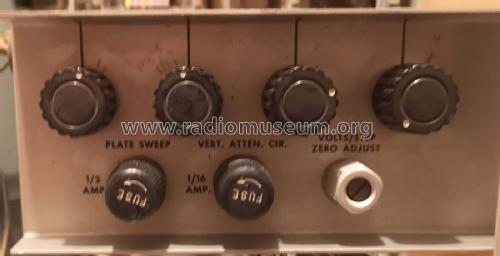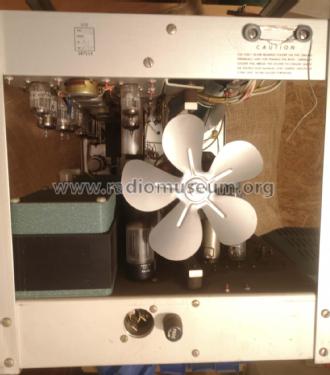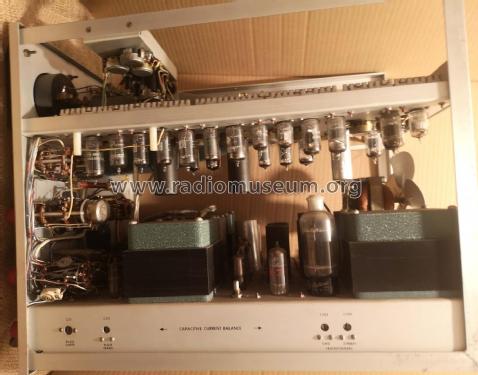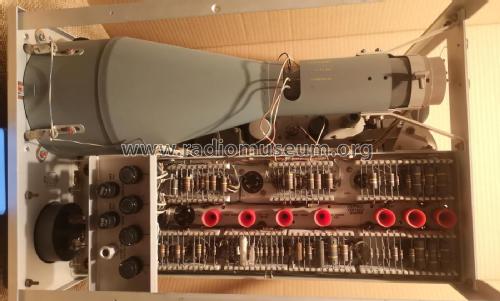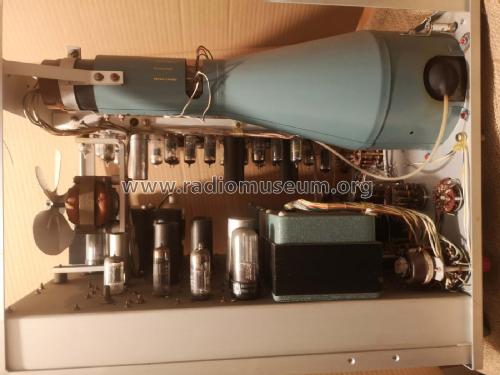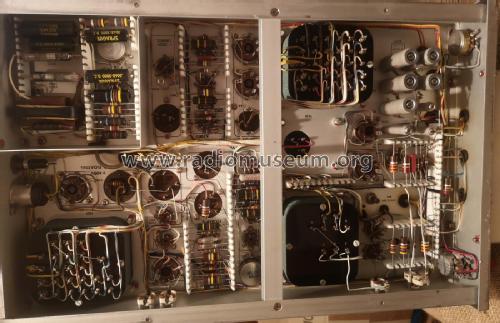Electron Tube Curve Tracer 570
Tektronix; Portland, OR
- Land
- USA
- Hersteller / Marke
- Tektronix; Portland, OR
- Jahr
- 1956 ?
- Kategorie
- Service- oder Labor-Ausrüstung
- Radiomuseum.org ID
- 116199
- Wellenbereiche
- - ohne
- Betriebsart / Volt
- Wechselstromspeisung / 105-250 Volt
- Lautsprecher
- - Für Kopfhörer oder NF-Verstärker
- von Radiomuseum.org
- Modell: Electron Tube Curve Tracer 570 - Tektronix; Portland, OR
- Abmessungen (BHT)
- 13 x 16.5 x 24.5 inch / 330 x 419 x 622 mm
- Bemerkung
- Tektronix 570 Electron-Tube Characteristic Curve Tracer displays plate, screen or grid currents against plate or grid voltage. 4 to 12 steps per family. Accurate pointer voltmeter on the front panel to monitor dc and heater voltages. T52P1 CRT standard.
- Nettogewicht
- 33.8 kg / 74 lb 7.2 oz (74.449 lb)
- Originalpreis
- 995.00 $
- Literaturnachweis
- - - Manufacturers Literature
- Literatur/Schema (1)
- Funk-Technik (FT) (11/1959, S. 392 - 395 / Beschreibung)
- Autor
- Modellseite von Emilio Ciardiello angelegt. Siehe bei "Änderungsvorschlag" für weitere Mitarbeit.
- Weitere Modelle
-
Hier finden Sie 388 Modelle, davon 376 mit Bildern und 92 mit Schaltbildern.
Alle gelisteten Radios usw. von Tektronix; Portland, OR
Sammlungen
Das Modell Electron Tube Curve Tracer befindet sich in den Sammlungen folgender Mitglieder.
Forumsbeiträge zum Modell: Tektronix; Portland,: Electron Tube Curve Tracer 570
Threads: 1 | Posts: 1
There is a tendency for some high Gm tubes being tested with the Type 570 Characteristic-Curve Tracer to oscillate despite the use of resistor patch cords and shielding with Belden braid.
Tektronix Field Engineer Earl Williams reports considerable sucess in suppressing these oscillation through the use of Ferramic cores installed on each bare-wire lead connecting pin jack to tube socket plug. Ferramic cores are the ferrite material beads that can be strung on wire to act as suppressors to high-frequency currents flowing in wire. Earl says that brief test did not show that use of beads could eliminate possible need for resistor patch cords, but he was able to display curves he had not seen to date.
Source: ServiceScope Oct 1959
Pius Steiner, 19.Jul.11





